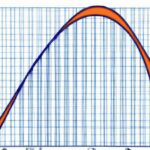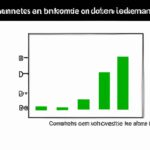The Gini coefficient doesn’t capture the full complexity of inequality. It focuses on income disparities, downplaying broader socio-economic factors influencing disparities. The measure’s sensitivity to distributional changes poses challenges when comparing societies with differing average incomes. Furthermore, the analysis may overlook the impact of welfare policies and other non-monetary factors on equality. There is a risk of oversimplification with the Gini index, as it doesn’t account for variations within income brackets. The metric’s reliance on income data alone neglects non-monetary aspects crucial to understanding inequality comprehensively. Thus, supplementing Gini analysis with complementary metrics can provide a more nuanced perspective.
Table of Contents
- Assumptions of income distribution
- Inability to capture inequality within groups
- Lack of clarity in value interpretation
- Lack of context in explaining inequality
- Sensitivity to income extremes
(Understanding the Gini Coefficient)
The concept of the Gini coefficient offers insight into income inequality within a population. However, there are notable limitations to its analysis. One key drawback is its failure to capture wealth distribution accurately, as it solely focuses on income disparities. Moreover, the Gini coefficient does not consider the source of income, which can vary greatly among individuals. This limitation can result in misleading conclusions about economic disparities within a society.
Another crucial limitation is the potential for data manipulation to skew the results. Inaccurate or incomplete data can lead to misleading interpretations of inequality levels. Additionally, the Gini coefficient is unable to account for non-monetary factors that contribute to overall well-being, such as access to education, healthcare, and social services. This oversight can underestimate the true impact of inequality on people’s lives.
Furthermore, the Gini coefficient assumes a linear relationship between income ranks, which may not always hold true in real-world scenarios. This oversimplification can overlook nuances in the distribution of wealth and lead to misconceptions about the extent of inequality in society. In conclusion, while the Gini coefficient is a valuable tool for measuring income inequality, its limitations underscore the need for a more comprehensive approach to understanding economic disparities.
Assumptions of income distribution
Income distribution is like a complex, intricate tapestry woven with threads of assumptions. When we delve into the limitations of Gini coefficient analysis, we begin to unravel these underlying assumptions that shape our understanding of wealth disparities.
At first glance, the Gini coefficient may seem like a straightforward measure – a numerical reflection of income inequality in a society. However, beneath its surface lies a web of assumptions waiting to be scrutinized. One key assumption is that income is distributed continuously across the population, neatly falling into quantifiable intervals. But life isn’t always so neat and tidy; incomes can vary wildly within even small subsets of a population.
Another implicit assumption inherent in Gini coefficient analysis is that all sources of income are included and accurately reported. This assumption overlooks under-the-table earnings, inheritances, or other forms of wealth transfer that may not be captured through traditional means. It fails to account for disparities caused by systemic factors such as discrimination or unequal access to opportunities.
When we rely solely on the Gini coefficient to paint a picture of income distribution, we risk oversimplifying reality. The nuances and complexities inherent in how wealth flows through society cannot be fully encapsulated by a single number alone.
Moreover, there’s an emotional dimension to these assumptions – they shape not just policies but also perceptions and values within society. By assuming equal opportunity and fair distribution as givens in calculating income inequality, we may unintentionally perpetuate harmful ideologies about meritocracy and individual responsibility.
Ultimately, confronting these assumptions requires us to confront uncomfortable truths about power dynamics at play in shaping economic outcomes. It demands that we move beyond numbers towards narratives that capture the lived experiences behind those statistics: stories of resilience in the face of adversity, tales of privilege breeding more privilege.
In exploring the limitations of Gini coefficient analysis through dissecting its underlying assumptions around income distribution, we embark on a journey toward deeper empathy and understanding. We come face-to-face with the messy intricacies of human existence – where no two financial stories look quite alike but all are interconnected in shaping our social fabric.
Inability to capture inequality within groups
When we delve into the realm of measuring inequality, one commonly used metric is the Gini coefficient. However, as reliable as this tool can be on a broader scale, it falls short when attempting to capture disparities within specific groups or segments of society. It’s like trying to paint a detailed portrait with broad strokes – some intricacies are inevitably lost in translation.
Within any given community, there exists a tapestry of diversity and differentiation that cannot be adequately conveyed by a single numerical value. The nuances of individual experiences, obstacles faced, and opportunities presented create layers of complexity that elude simple quantification.
Imagine peering into a bustling marketplace where vendors display their wares – each stall tells a unique story shaped by personal circumstances and societal factors. Attempting to summarize this rich tapestry with just an average overlooks the vivid hues and intricate patterns that give depth to each narrative.
Furthermore, within these diverse groupings lie hidden pockets of disparity and disadvantage that remain obscured by the overarching Gini lens. It’s akin to overlooking shadows cast in the alleys between bright buildings; these shadows hold tales untold, struggles unnoticed beneath the surface veneer of averages and indices.
Emotions run deep in these uncharted territories – voices silenced by statistics yearn for recognition beyond cold numbers on spreadsheets. Dreams deferred by systemic injustices find no solace in aggregated data points; they crave acknowledgment at a level where their essence is not diluted but magnified.
As we navigate this terrain fraught with complexities, it becomes imperative to recognize the limitations imposed by our current tools of measurement. While the Gini coefficient serves its purpose admirably on macroscopic scales, its inability to capture inequality’s true essence within groups underscores the need for more nuanced approaches sensitive to individual narratives woven into societies’ fabric.
In conclusion, just as every brushstroke contributes uniquely to an artist’s masterpiece so do individual stories shape our societal landscape – painting pictures far richer than what mere numbers can convey alone.
Lack of clarity in value interpretation
Ah, the murky waters of value interpretation in the realm of Gini coefficient analysis — let’s dive right in. Picture this: you’re sifting through heaps of data, trying to grasp the true essence of economic inequality within a society. The numbers stare back at you, but do they truly reveal what lies beneath the surface?
One major stumbling block is the lack of clarity in how we interpret values when calculating the Gini coefficient. It’s like deciphering hieroglyphics without a Rosetta Stone; there are multiple ways to crunch those numbers, leading to potential discrepancies and skewed results.
Imagine standing on shifting sands as you attempt to make sense of income distribution patterns. Is that figure reflective of reality? Or has it been warped by different methodologies used for calculation? Uncertainty creeps in like an unwelcome guest at a party, casting doubt on the accuracy and reliability of our findings.
As researchers grapple with these challenges, emotions run high — frustration mingles with determination as they strive to untangle this Gordian knot. The desire for precision clashes with the realization that absolute certainty may forever elude us in this complex dance of statistics.
Amidst all this tumult, one thing remains clear: without a unified framework for value interpretation, any analysis relying on the Gini coefficient becomes akin to building a house on shaky foundations. We long for solid ground beneath our feet but find ourselves navigating treacherous terrain instead.
The air crackles with tension as experts debate nuances and intricacies, each defending their approach fervently. Like chess players locked in an intense match, they plot their next move carefully, knowing that one misstep could unravel their entire argument.
In conclusion, navigating the labyrinthine paths of value interpretation within Gini coefficient analysis is no easy feat. It requires fortitude and finesse—a delicate balancing act between objectivity and subjectivity that tests not only our analytical skills but also our very essence as seekers of truth amidst uncertainty’s foggy haze.
(Calculating the Gini Coefficient)
Lack of context in explaining inequality
Explaining inequality solely through the lens of the Gini coefficient often fails to capture the intricate web of factors that contribute to disparities in society. This lack of context can obscure crucial nuances and paint an incomplete picture of the true extent and impact of inequality.
When we rely solely on statistical measures like the Gini coefficient, we risk oversimplifying a complex issue that is deeply intertwined with historical, social, and political dynamics. Imagine trying to understand a vibrant painting by focusing only on one small corner; you’d miss out on the richness and depth that exist beyond that limited view.
In reality, inequality is not just about numbers on a chart—it’s about lived experiences, systemic barriers, cultural norms, and power dynamics that shape our world in profound ways. By reducing it to a single metric, we run the risk of overlooking these important elements that are essential for crafting effective solutions.
Consider two societies with identical Gini coefficients: one where wealth distribution reflects historical injustices perpetuated by discriminatory policies, and another where equal opportunities abound for all citizens. Merely looking at their Gini scores would fail to convey the stark differences in structural inequalities present in each society.
Moreover, when we strip away context from discussions around inequality, we also diminish the voices and stories of those most affected by its consequences. Behind every data point lies a human experience—a struggle for dignity, opportunity denied or seized unjustly—that cannot be fully captured by mathematical formulas alone.
It’s crucial to remember that behind every percentage point increase in income disparity lies real people grappling with daily challenges exacerbated by unequal access to resources and opportunities. Their hopes dashed against societal structures built on privilege and exclusion—this is what gets lost when we divorce inequality from its broader context.
Ultimately, if we truly wish to address inequities in our world effectively…
Sensitivity to income extremes
Taking a closer look at the limitations of Gini coefficient analysis, one crucial aspect to consider is its sensitivity to income extremes. Picture this: on one end of the spectrum, there are those living in unimaginable luxury with lavish lifestyles and opulent mansions, while on the other end lie individuals struggling to make ends meet, grappling with poverty’s harsh realities day in and day out.
The Gini coefficient, despite being a widely used measure of income inequality globally, has its flaws when it comes to extreme wealth or poverty within a population. It tends to oversimplify complex economic situations by condensing a vast range of income disparities into a single number. This simplification can dilute the impact of outliers – those ultra-rich or extremely poor individuals who significantly skew the overall distribution.
Imagine trying to capture the stark contrast between a billionaire CEO flying in private jets and an underprivileged child scavenging for food on the streets through just one statistical value. The depth of their disparate circumstances gets lost in translation when plugged into traditional inequality metrics like Gini coefficients.
Moreover, these extremes can distort reality further due to inadequate representation within small sample sizes – leading to misleading interpretations regarding actual income distribution trends. It’s akin to viewing society through foggy glasses; you get an obscured picture that fails to convey the nuanced struggles faced by different segments of society adequately.
Consider how such insensitivity might affect social policy decisions based solely on Gini coefficients – overlooking critical pockets of deprivation or affluence hiding beneath average figures. In essence, relying solely on this metric without acknowledging its blind spots risks neglecting vulnerable populations while overestimating progress where deep-rooted inequalities persist.
To truly grasp income inequality’s complexity requires delving beyond mere numbers and statistics – immersing oneself in real narratives behind each data point. Understanding individual stories woven into the fabric of wealth distribution paints a richer tapestry than any coefficient could ever encapsulate alone.













